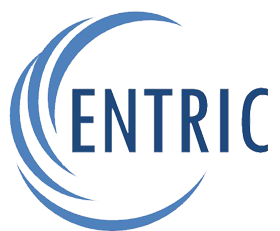Often the cost of prescription opioids on the street is too high to sustain long-term, driving individuals to self-medicate with heroin, alcohol or other substances. Three to five percent of individuals managing pain with prescription opioids develop a substance use disorder, according to researchers at the University prescription drug abuse of Tennessee. These medications are some of the most potent painkillers and have high addiction rates. More Americans died from drug overdoses in 2014 than any year before, according to the latest research from the Centers for Disease Control and Prevention (CDC).

Prescription Drug Misuse: Taking a Lifespan Perspective
The prevalence of chronic pain conditions will only increase with the advancing age of our population 8. In the last few decades, the treatment of chronic pain has expanded in the primary care setting 3. Many primary care providers have had little specific training in pain medicine and addiction, and are unsure about how to safely prescribe opioids 4. In addition, the high prevalence of psychiatric comorbidity in those that misuse or abuse prescription drugs contributes to the complexity in treating pain 5. While prescription drugs have been used effectively and appropriately to treat medical and psychiatric illness in the majority of patients, rates of abuse have escalated at alarming rates in the past decade 1.
Drug and Alcohol Treatment Facilities in California
- This is an opportunity to confront the individual about the consequences of addiction and ask the person to accept treatment.
- Under medical supervision, healthcare professionals closely monitor patients to address symptoms such as nausea, tremors, seizures, and psychological distress.
- Carrie counsels clients with abuse trauma, helps them rebuild their self-worth and assists them in obtaining healthy coping skills.
The development of Prescription Drug Monitoring Programs and NASPER are steps toward prevention and better detection of prescription drug abuse. The FDA, DEA, Office of the National Drug Control Policy, NIDA, SAMHSA, and organizations such as Partnership for a Drug-Free America have all made serious efforts to address this epidemic. Pharmaceutical companies are also developing innovative tamper-resistant formulations. Better education in medical schools of pain management and substance abuse is necessary. The epidemic of Prescription Drug Abuse has reached a level at which national attention has forced physicians to re-evaluate our need to provide appropriate care to our patients, while understanding the potential risks of diversion and abuse of prescription drugs. The epidemic of prescription drug abuse has reached a critical level, which has received national attention.
Explore Our Resources for Recovery
Monitoring tools and urine drug testing are also helpful when administering chronic opioid therapy. An evaluation of the 4 “A’s” at all visits is essential to evaluate success, or to determine a need for change in management, such as dose escalation or discontinuation. If treatment agreements are violated in cases where serious or repeated aberrant behaviors have been detected, discontinuation or transfer of care are more easily addressed when rules have been delineated. With the knowledge of the appropriate use of opioids, and the risks involved, an organized approach toward assessing and managing pain can facilitate drug addiction the development of individualized treatment plans that maximize patient comfort, satisfaction and safety. It is our duty as physicians to provide the best quality care to our patients, and well-informed opioid management should serve to reduce the epidemic of prescription drug abuse. Another effort to minimize prescription drug abuse is the development of drugs that are tamper-resistant and minimize the potential for abuse or diversion.
- These drugs can prevent other opioids from affecting the brain (naltrexone) or relieve withdrawal symptoms and cravings (buprenorphine and methadone), helping the patient avoid relapse.
- For example, a large population-based study in Canada suggested that almost 5% of the population abused opioids in the previous year (Shield, Jones, Rehm, & Fischer, 2013).
- In individuals who are opioid-naive, and in the elderly, opioids should be started at low doses and titrated slowly.
- While it can be difficult to recognize when someone is struggling with prescription drug abuse (especially if they are hiding their usage), there are some common physical, emotional, and behavioral signs that may indicate a problem.
What Happens in Drug Rehab: A Comprehensive Guide to the Recovery Process
Many individuals who become addicted to stimulants begin using cocaine as an alternative or take the drug to chase a more intense high. Prescription drug abuse doesn’t just affect the body—it changes how a person thinks and feels. Anxiety, paranoia, and depression can become more intense, https://www.parklife.mg/2021/07/09/is-it-narcissism-or-alcoholism/ especially if someone is misusing stimulants or sedatives. Many people struggle with focus and memory, finding it harder to process information or make decisions. These are used for different conditions including ADHD, ADD, depression and narcolepsy. These drugs essentially jumpstart the body which causes elevated heart rate and blood pressure.

Recovery Programs
To tackle the issue of prescription drug abuse, it is essential to address these contributing factors. Education and awareness programs can help dispel misconceptions about prescription drugs and highlight the potential dangers of their misuse. Additionally, proper disposal of unused medications can prevent their availability for non-medical purposes. Access to support and treatment options is crucial for individuals struggling with prescription drug abuse, providing them with the necessary resources to overcome addiction and regain control of their lives. One of the main factors contributing to prescription drug abuse is the accessibility and availability of these medications. Prescription drugs are intended to be used under the guidance of a healthcare professional, but they can sometimes be obtained through illicit means.
- She has strong communication skills, compassion for others, and a drive to provide the best services we can to each client and their family throughout their experience with Elevate.
- Prescription monitoring programs (PMP) first involves collecting data from physicians who prescribe medications and pharmacies that fill these prescriptions.
- Fortunately, the FDA, drug manufacturers and professional organizations have been active in finding ways to reduce risk.
- Over time, these pharmacological mechanisms lead to tolerance, dependence, and withdrawal, reinforcing the cycle of misuse.
- Prescription drugs can be highly addictive and have serious side effects when not used as directed.
“But they’re also taking it as a performance-enhancing substance to increase their ability to stay up late and to work and concentrate.” These drugs, which include Ritalin, Concerta, and Adderall, are often prescribed for attention deficit hyperactivity disorder (ADHD). By enhancing brain activity, stimulants increase one’s attention, alertness, and energy. The study also found that teens’ abuse of prescription and over-the-counter medicines is equal to or higher than abuse of drugs such as cocaine and crack, Ecstasy, methamphetamine, and heroin. Roughly 6.3 million Americans report that they’re currently using prescription drugs for nonmedical reasons, according to the U.S. Because most misused prescriptions originate from friends, family, or legitimate prescriptions, prevention efforts focus on secure storage, disposal programs, and careful prescribing practices.
Carolina Recovery
This chapter will cover the epidemiology of prescription drug abuse, regulatory issues, and chronic pain management with narcotic analgesics. By understanding the scope of the problem, developing structured pain management plans, and being aware of “aberrant behaviors,” clinicians may feel more prepared and confident when dealing with acute and chronic pain. Opioids are most addictive when you take them in a way other than how they were prescribed — for example, crushing a pill so that it can be snorted or injected. This life-threatening drug misuse is even more dangerous if the pill is effective for a longer period of time. Rapidly delivering all the medicine to your body can cause an accidental overdose. Taking more than your prescribed dose of opioid medicine, or taking a dose more often than prescribed, also increases your risk of opioid use disorder.
